You finally got your scope mounted on your rifle, and you are ready to take it out shooting!
But you will only have a good shooting experience if you can zero your rifle scope.
Today, we will cover the basic steps of how to zero a rifle scope. No frills here, just a basic rundown.
Table of Contents
Loading…
Steps for Zeroing a Rifle Scope
1. Check Your Adjustment Values
The dials on the top and sides of your red dot allow you to adjust your reticle up and down (elevation) and left and right (windage).
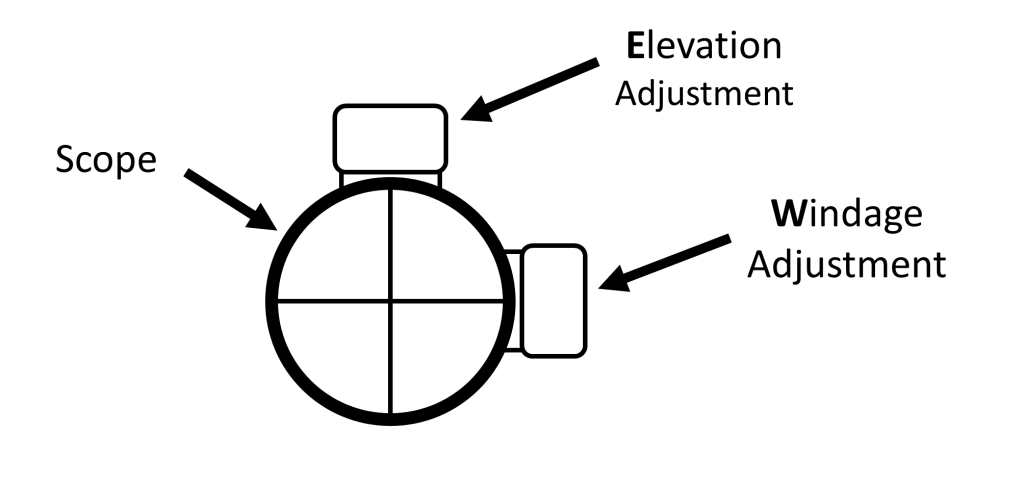
When you rotate these knobs, they will click. Each individual click will move the reticle a specific amount in that direction.
The most common adjustment values for these clicks are ¼ MOA, ½ MOA, 1 MOA, and .1 MIL.
For those that are unfamiliar, MOA stands for Minute of Angle, and MIL is short for Milliradian.
In layman’s terms, 1 MOA equals almost 1 inch at 100 yards, and 1 MIL is 3.6 inches at 100 yards.

Depending on what type of scope you have, you will need to learn how these adjustments work. You can read more in our article on MOA vs. MRAD.
Most scopes will have the adjustment values printed on the turrets themselves. If not, refer to the user manual.
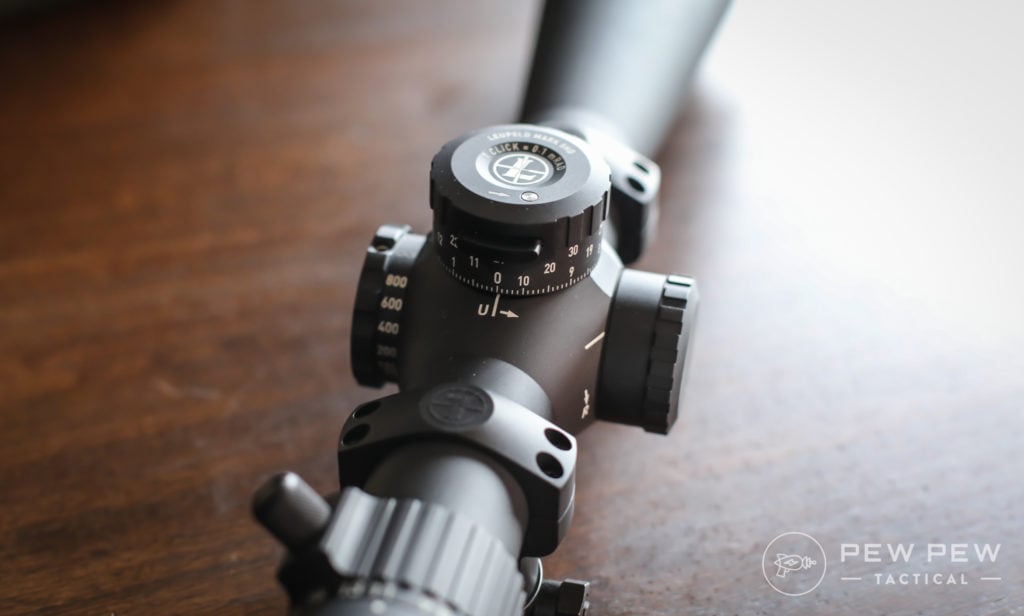
2. Get On Paper
Depending on how your optic is mounted, the optic itself, and other factors, you might find yourself shooting at 100 yards and not seeing any bullet impacts.

Starting at 25 yards will help you get a rough zero to ensure you will be “on paper” when you move out to 100 yards.
Remember, the closer you are to the target, the more clicks you need to move your reticle one inch.
Here is a handy dandy chart for MOA scopes to help you out.
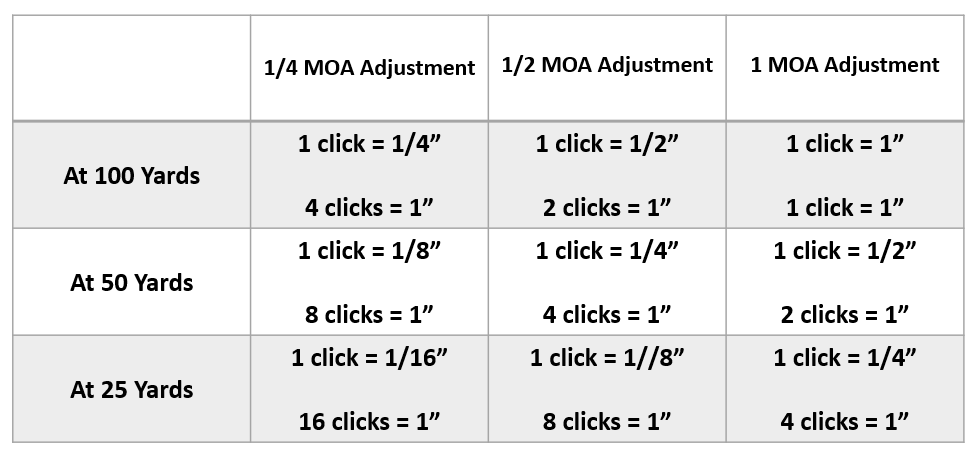
If you are using an MRAD scope, you will use the reticle to see how many mils you are off and then adjust the scope by that many mils.
For example, if the bullet impact is 1.1 mils to the low, and 0.4 mils right, you will adjust 11 clicks up and 4 clicks left (each click is .1 MIL).
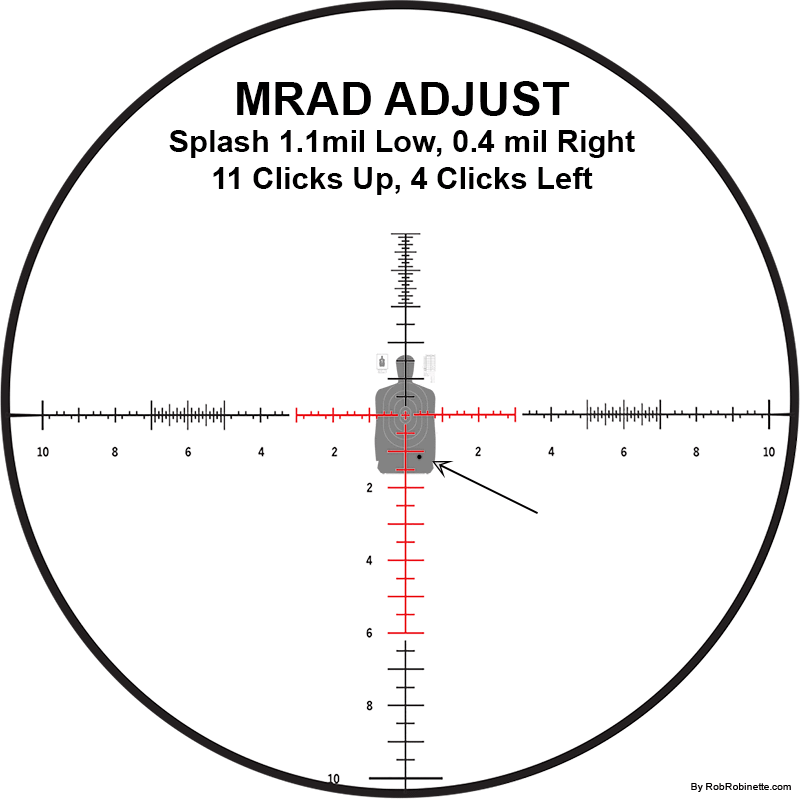
3. Shoot A Group at 100 Yards
Once you are on paper at 25, move out to 100 yards if possible.
We recommend using a rifle rest, shooting bags, or other stabilization aid to help take out as much human error as possible during this process.
-
25% off all OAKLEY products - OAKLEY25
Copied! Visit Merchant
If you are using a second focal plane scope, make sure your scope is at maximum magnification to ensure the reticle adjustments are accurate. If you are unsure about your scope’s focal plane, check out our article on first focal plane vs. second focal plane.
Fire three to five rounds and observe where your shots impact the target. I really like using paper targets with 1-inch square grids to help me measure exactly how far off my impact is from my point of aim.
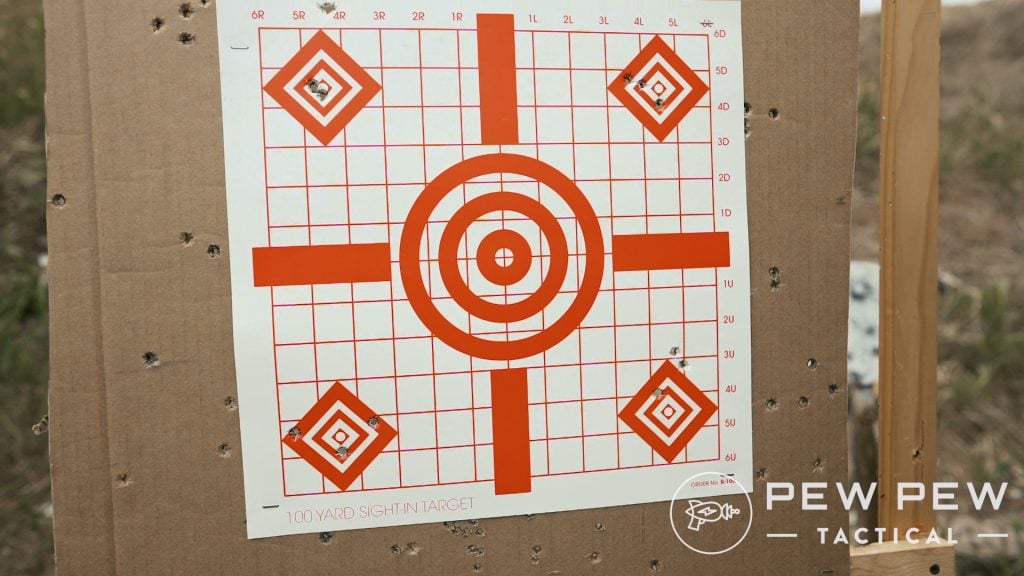
4. Adjust Your Windage and Elevation
Once you have your group on paper, it is time to adjust your scope so that your point of impact matches your point of aim.
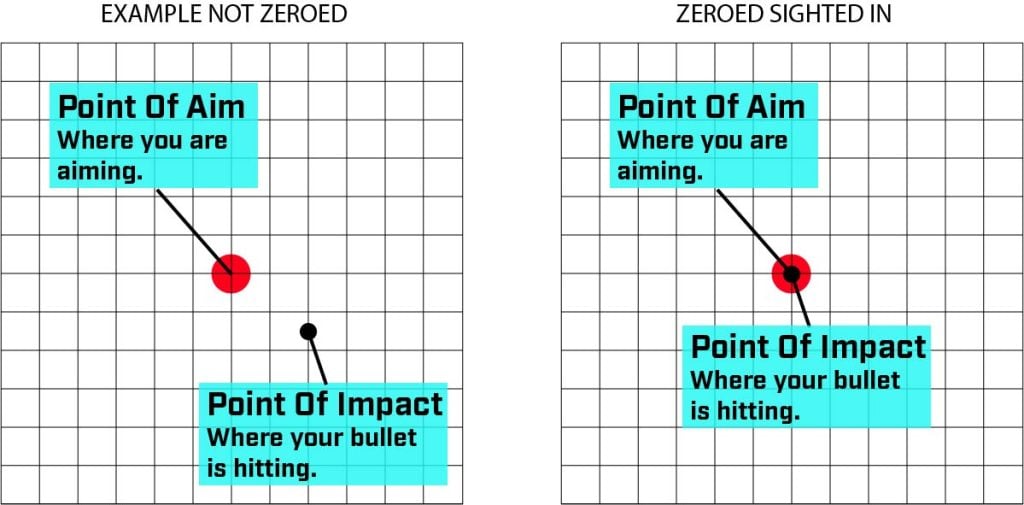
Measure how far left or right and how far up or down the center of your group was from your point of aim.
If you are using an MOA scope, you can use the chart provided earlier and adjust your windage and elevation using the appropriate number of clicks.
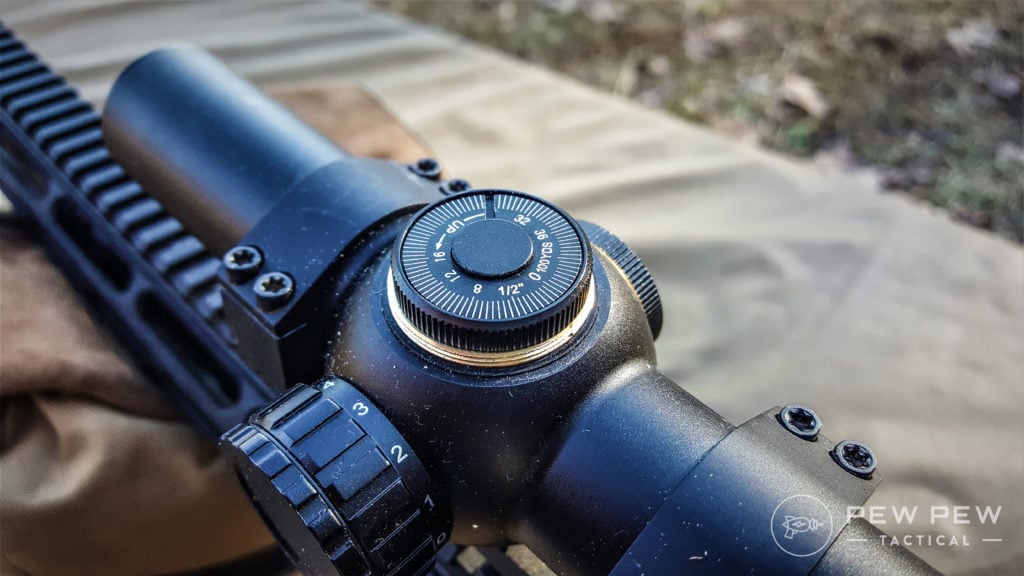
For example, if your scope uses ¼ MOA adjustments and you are off three inches to the left at 100 yards, you will need twelve clicks to move the dot over three inches.
For MRAD scopes, regardless of the distance you are shooting at, you can use the reticle to make your adjustments.
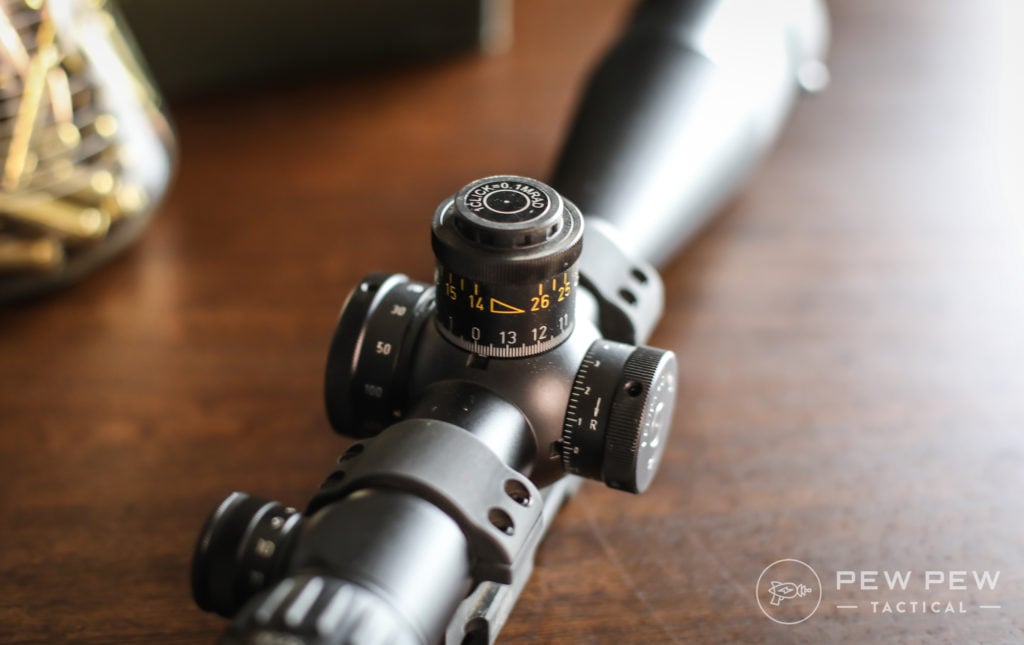
With 0.1 MIL adjustments, if you are off 2 mils to the left, you will adjust 20 clicks to the right.
5. Repeat
Repeat the process as needed until your point of aim matches your point of impact.

Let your rifle cool off between groups to prevent the barrel from heating up and causing accuracy degradation.
6. Reset Your Turrets to Zero (optional)
An optional last step you can do is to reset your turrets to “zero.”
This means moving the turret so that the “0” on the turret is lined up with the center indicator mark on the scope body.
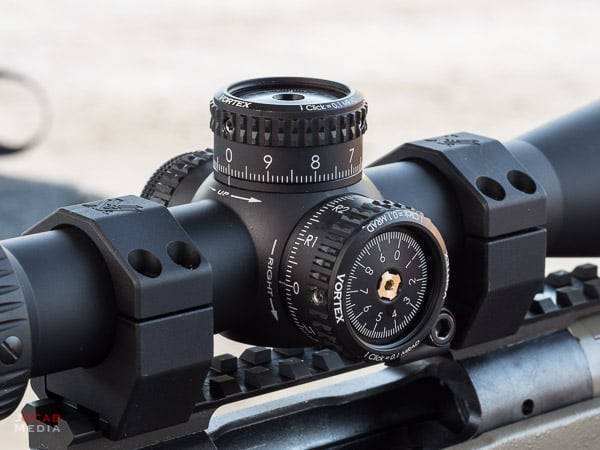
The purpose of this is that if you make any adjustments, you can easily just move the knobs back to “0” to return to your rifle’s zero.
Completely loosen the hex screws on the outside of the turret, turn the turret until the “0” lines up with the indicator mark, then re-tighten the screws.
You should not hear any clicks during this process, and the turret should spin freely. If you hear clicking, that means the scope was adjusted accidentally, and you will need to re-zero your rifle.
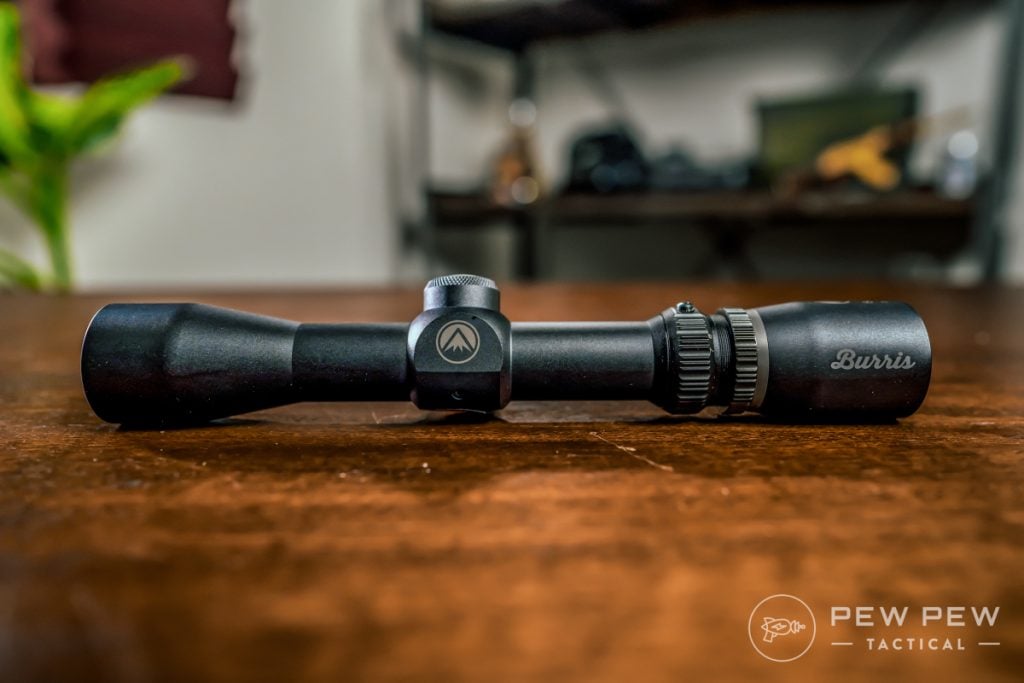
Final Thoughts
Hopefully, this will help you get started when it comes to zeroing your rifle scope. Remember, this is just a basic introduction.
It is ultimately up to you to decide what distance to zero your gun at based on your needs and your specific setup.
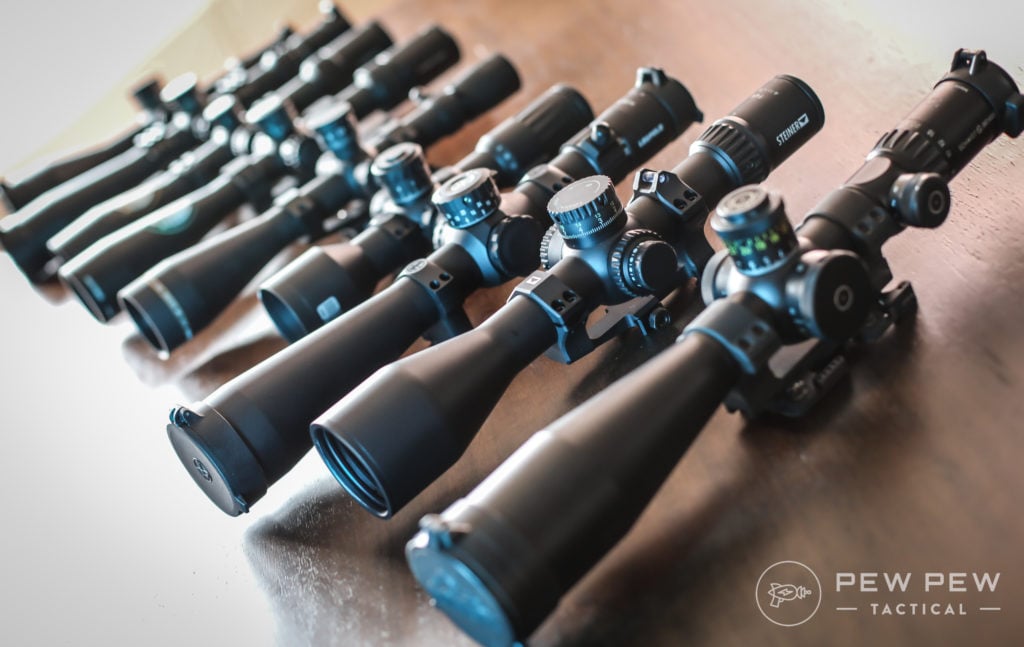
Tell us about your zeroing experiences below! Having trouble spotting your impacts? Check out our article on the 9 Best Spotting Scopes of 2023!

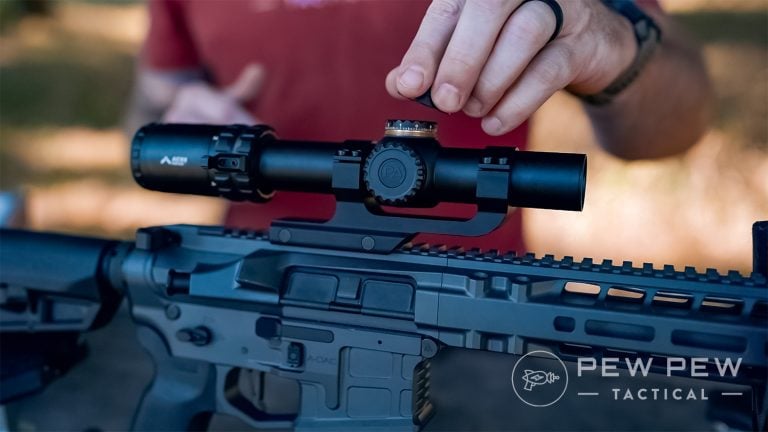
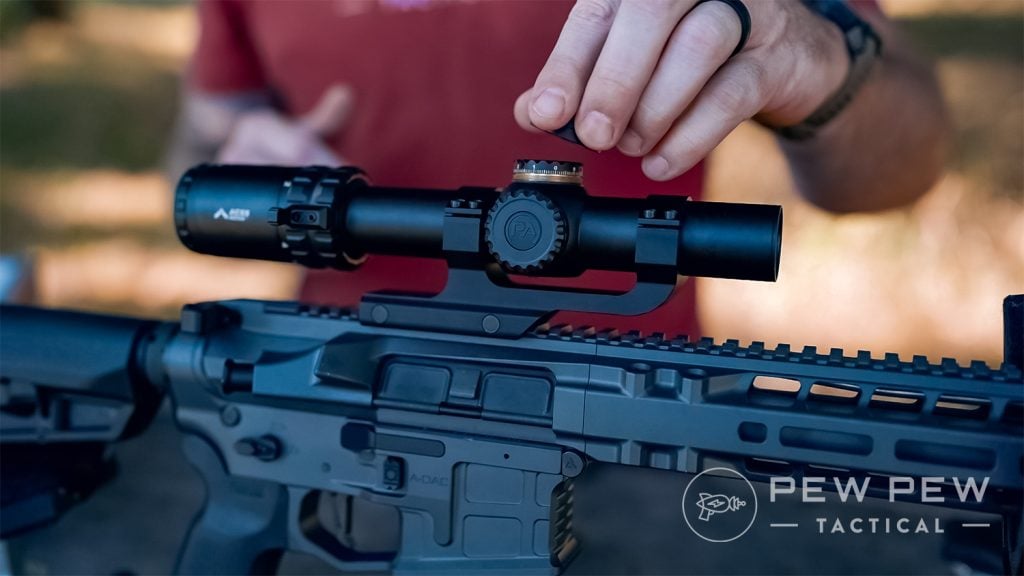

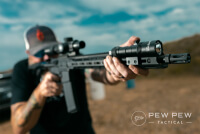


12 Leave a Reply
I'm new to this and no expert for sure but this seems incorrect to me: "For example, if your scope uses ¼ MOA adjustments and you are off three inches to the left at 100 yards, you will need six clicks to move the dot over three inches." This may be true if your scope is 1/2 MOA, but if it is 1/4 MOA then wouldn't it take twelve clicks ?
Good catch, and absolutely correct. That was definitely a typo that was supposed to read 1/2 MOA adjustments. The chart that was posted is correct and reflects your observation.
I had several cartridge rifles, 3006, 222 mag, .22, etc when I was young and did a lot of hunting. I had no trouble sighting in my rifles, I used a leupold mount and Bausch and Lomb 2.5 - 8 scope . I recently purchased a Air Venturi Avenger .22 cal, I had one hell of a time zeroing in that rifle, all my fault I am 88 years old and my poor pea picking brain just was not up to the task. I finally figured it out, real nice tight groups at 50 yards. trying to decide what range I will finally select. shooting ground squirrels on my property. since I do not have a compressor I cannot pressurize to the max 4120 lbs. I usually get 3200 and shoot at 2800.
"Keep in mind that MOA and MILs are angler measurements."
Naw, fish are measured in inches and/or pounds.
[I believe the word you were looking for was "angular."]
Hey man... you're not wrong.
I am a hunter and ai own some of what I like what i lijecto know which ai have heard but not actually when to a shooting range out doors in about 5 years and I am telling on myself I been wanting to learn about Zeroing my Rifle which start with Adams Arms , Mossberg's 308-450 and a 12 gauge , And Carring too Cpl I need to know while zeroing my rifles does the scope or Moa and so forth doea the lines more when shooting at your target.
Here's a free home boresight approach for AR style rifles/pistols/SBRs to get close before going to the range. Separate the upper from the lower, remove the charging handle and BCG. Hold the upper in place with a vise, pillows, or whatever you have to work with. Look thru the barrel (boresight) and point it at something that is at the distance you are trying to zero at. Now adjust the scope, red dot, etc. for POA to hit where the boresight is pointed. Recheck a couple of times and you will be close when you get to the range.
I have had to zero many rifles. If it is a bolt rifle, I take the bolt out and aim the barrel at something, then click the scope so it is on the same object. This can be done at the kitchen table, aiming out a window.
If I can't do that (as with many lever and semi rifles) I fire the first shot, aiming at a lump of dirt or a flower in the backstop. From this first shot I can make a gross adjustment so that the first shot at the target will be on paper.
For your windage adjustment, shouldn't it be 32 clicks? 2 inch = 8 MOA so 8 x 4 = 32? Unless you're windage adjustment is 1 MOA per click?
You are correct! This is why I always hate the math method, even sitting in an office writing an article about it and I still forget to convert for the range. I did math for 100 yards, not 25 yards. Thank you for noticing!
That's okay I'm still lost on this MOA stuff
For the noobs like myself if you shoot off a whole bunch trying to zero in make sure the scope hardware stays tight. I had the mishap of missing two bucks at less than 100 yds. first one yeah okay maybe I was nervous. Second time was WTFudge, check scope and front scope screw was loose as a goose.
I use loctite